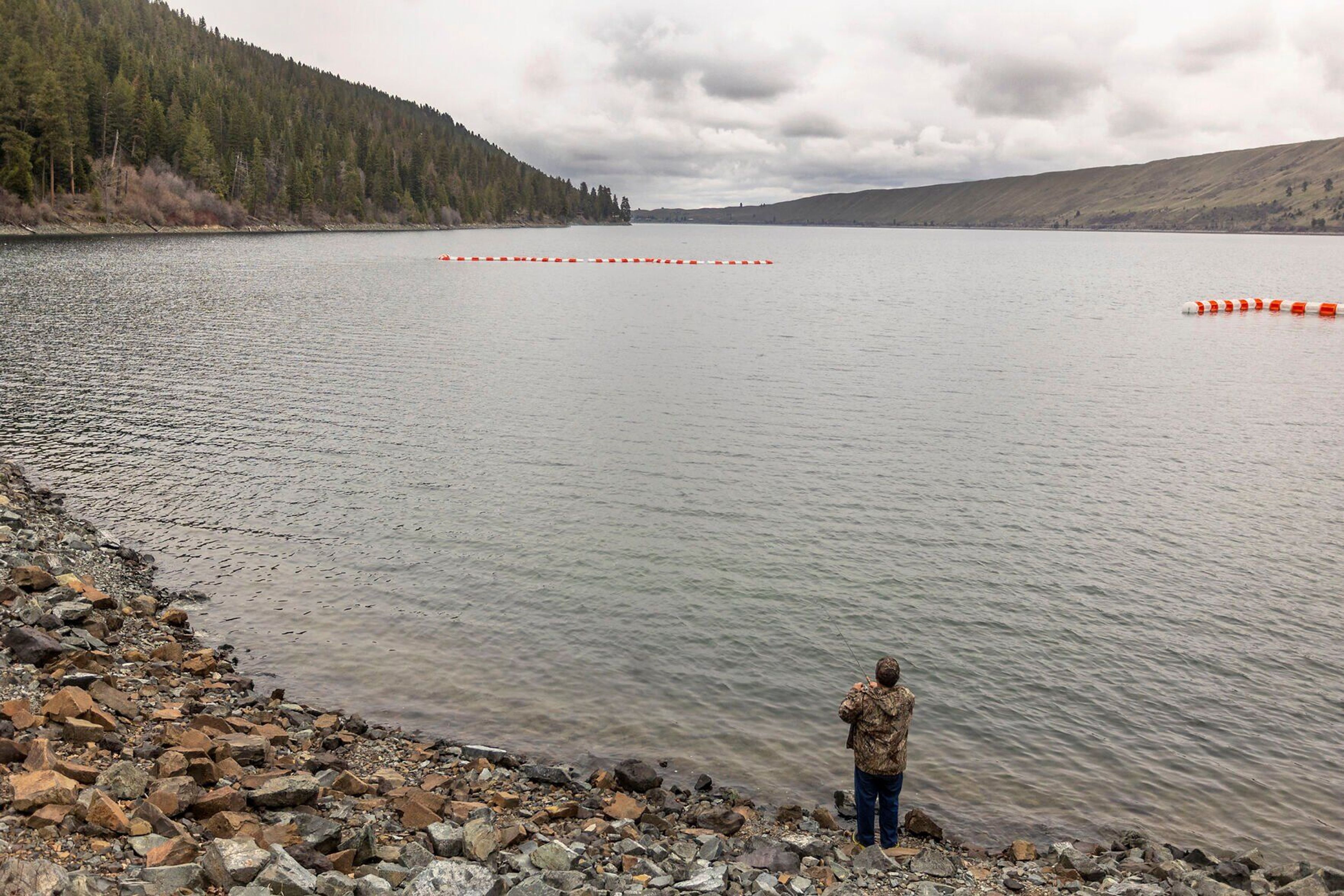Limited steelhead fishing season on Clearwater River a possibility
Fisheries officials at the Idaho Department of Fish and Game and Nez Perce Tribe are now optimistic they will be able to trap enough adult, B-run steelhead to meet spawning needs at Dworshak National Fish Hatchery. It’s a dramatic change from just a few months ago when they feared so few large steelhead would return to the Clearwater River that the hatchery would fall well short of its goals.
Things are even looking bright enough that Idaho fisheries officials are making contingent plans to hold a limited, spring steelhead fishery on the Clearwater. Such a season depends on more steelhead being trapped at Dworshak Hatchery in the coming weeks.
All steelhead fishing was closed on the Clearwater and its tributaries and on the Snake River below Couse Creek boat ramp in September. The move was made in response to dismal returns of steelhead to the Snake River Basin. Through Tuesday, just more than 31,000 steelhead had been counted at Lower Granite Dam, the lowest on record since 1979. The B-run, comprised of steelhead that generally spend two years in the ocean, is particularly depressed, and officials feared they may only get about half the number needed for spawning. In response, they implemented an emergency plan. In addition to fisheries closures on the Clearwater, Snake and Columbia rivers, the Nez Perce Tribe began intercepting Clearwater River-bound hatchery steelhead at Dworshak Dam.
They also began trapping steelhead at Dworshak National Fish Hatchery.
All of the measures, working in concert, seem to be paying dividends. Because of the steelhead fishing closures on the Columbia and lower Snake rivers, a higher percentage of adult steelhead than is typical survived the upstream journey from Bonneville Dam on the Columbia River to Lower Granite Dam on the Snake River. About 300 suspected B-run steelhead were trapped at Lower Granite and taken by truck to Dworshak Hatchery, where they are being held. In addition, about 400 steelhead have been trapped at Dworshak.
Officials at the hatchery are continuing to operate the trap there. It is typically operated for only a short term in the fall and then closed so more steelhead are available to anglers. The trap traditionally opens again in the spring when most of the fish are collected. This year, the trap is being operated continually.
Even so, if the spawning goals are to be met, it will likely depend on a successful effort to collect about 350 steelhead from the South Fork of the Clearwater River, where there is no hatchery trap. The state and tribe are working on a plan that is likely to include enlisting anglers to catch steelhead from the river and then transfer them to the hatchery.
“It’s optimistic, because we think there is over 2,000 two-ocean steelhead over (Lower Granite Dam) that should be in the Clearwater,” said Becky Johnson, production director of the tribe’s Department of Fisheries Resources Management. “There should be enough fish to make brood; it’s making sure we get our hands on them.”
Jim Fredericks, fisheries bureau chief for Idaho Fish and Game at Boise, said some sort of spring steelhead fishing season on the Clearwater River looks promising.
“We’re confident we’ll be able to provide some catch-and-release opportunity at a minimum, and possibly some level of harvest,” Fredericks said. “But we do need to continue to monitor broodstock collection and make sure we’re going to get there, and coordinate with our management partners.”
Lance Hebdon, anadromous fish manager for the Idaho Department of Fish and Game at Boise, said if a spring steelhead season is opened it could be limited to catch-and-release fishing. If harvest is allowed, Hebdon said anglers will only be allowed to keep one hatchery steelhead less than 28 inches in length per day.
“We need a couple more weeks of Dworshak trapping to get those numbers, then we will start talking specifics,” Hebdon said.








